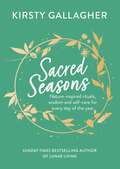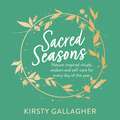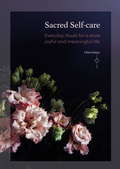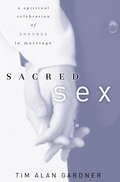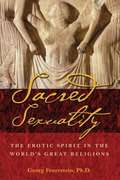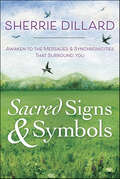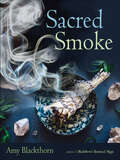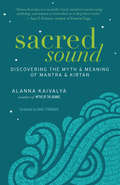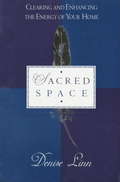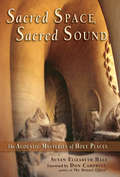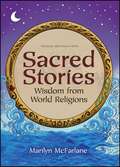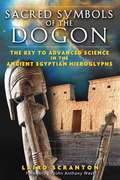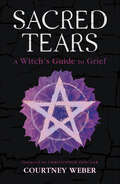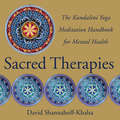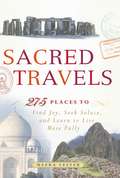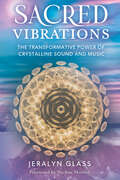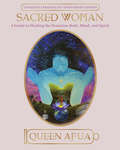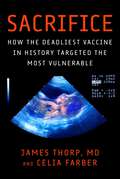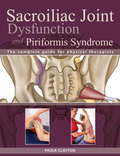- Table View
- List View
Sacred Seasons: Nature-inspired rituals, wisdom and self-care for every day of the year
by Kirsty GallagherDo you want to live a life with more meaning, purpose and connection? In this inspirational handbook, moon mentor, soul alignment and spiritual coach, Kirsty Gallagher, takes us through the year season by season to help us reconnect with nature. Sacred Seasons shows us how to find balance and a deep connection with the seasons, the astrological cycles and the lunar phases in order to live well and thrive. Packed with nourishing moon rituals, crystals and altar set-ups, journal prompts and practices and Kirsty's trademark wisdom, Sacred Seasons will show you how to draw on inspiration from nature's events, including the Spring Equinox, the Summer Solstice, the Autumn Equinox and Imbolc. You'll learn about the Wheel of the Year and the best moments to pause and reflect and look inwards, as well as when to tap into your abundant energy and achieve all your goals. Live your best year yet with Sacred Seasons.
Sacred Seasons: Nature-inspired rituals, wisdom and self-care for every day of the year
by Kirsty GallagherJourney through the seasons and learn how to live in alignment with nature's cycles to live a happier, more intentional life.From the Sunday Times bestselling author Kirsty Gallagher comes Sacred Seasons - a guide to living in alignment with nature's cycles & seasonal celebrations.We live such busy lives and have completely lost touch with nature. This is a handbook for reconnecting back with nature's energy, wisdom and a natural way of living. It will make you more observant, pausing to take stock of each season and how it's making you feel so you can take care of yourself all year round.Packed with nourishing rituals, practices and Kirsty's trademark wisdom, Sacred Seasons will show you how to draw on inspiration from nature's events, including the spring equinox, the summer solstice, the autumn equinox and Imbolc.(P) 2023 Hodder & Stoughton Limited
Sacred Self-care: Everyday rituals for a more joyful and meaningful life
by Chloe Isidora'Chloe is an absolute gem. As an early mentor and then friend I watched her turn her creative gifts from fashion into something so giving and nurturing. She draws on her experience of the yin and yang of life to offer women something tangibly spiritual to incorporate into their modern lives. I've watched her turn three back to back challenging events into rocks to leap into the great unknown and become the softest, strongest gem.' - Jasmine HemsleyDuring the average day, most people's time is consumed by thinking 'I need to do this. Can't forget that. How did I come across? What did that person think of me? Why are they acting like that?' Our endless thoughts can run havoc and often cause a state of stress and anxiety - the mind can be a very useful and brilliant tool, but when we slip into unhelpful thought patterns, with the same story going around and around on repeat, it's exhausting.In Sacred Self-Care, Chloe Isidora offers an antidote, with ceremonies and rituals that ease the mind and connect you to your heart space. Rituals can range from the smallest act, such as lighting a candle or blessing your food, to a ceremony involving many people singing and dancing. These processes encourage you to slow down, to honour the moment and to connect to something greater than yourself. Learn how to create a sacred space, hold a ceremony and weave ritual into everyday life. Through practices suggested throughout the book, you will create opportunities throughout the day, week and year to experience reconnecting and receive your own inner guidance, recognizing the feeling of following your joy, just as Chloe herself has.Chapters include:Sacred self-lovingAffairs of the heartFeminine empowerment ritualsCelebrationsGathering with friendsStaying connected
Sacred Self-care: Everyday rituals for a more joyful and meaningful life
by Chloe Isidora'Chloe is an absolute gem. As an early mentor and then friend I watched her turn her creative gifts from fashion into something so giving and nurturing. She draws on her experience of the yin and yang of life to offer women something tangibly spiritual to incorporate into their modern lives. I've watched her turn three back to back challenging events into rocks to leap into the great unknown and become the softest, strongest gem.' - Jasmine HemsleyDuring the average day, most people's time is consumed by thinking 'I need to do this. Can't forget that. How did I come across? What did that person think of me? Why are they acting like that?' Our endless thoughts can run havoc and often cause a state of stress and anxiety - the mind can be a very useful and brilliant tool, but when we slip into unhelpful thought patterns, with the same story going around and around on repeat, it's exhausting.In Sacred Self-Care, Chloe Isidora offers an antidote, with ceremonies and rituals that ease the mind and connect you to your heart space. Rituals can range from the smallest act, such as lighting a candle or blessing your food, to a ceremony involving many people singing and dancing. These processes encourage you to slow down, to honour the moment and to connect to something greater than yourself. Learn how to create a sacred space, hold a ceremony and weave ritual into everyday life. Through practices suggested throughout the book, you will create opportunities throughout the day, week and year to experience reconnecting and receive your own inner guidance, recognizing the feeling of following your joy, just as Chloe herself has.Chapters include:Sacred self-lovingAffairs of the heartFeminine empowerment ritualsCelebrationsGathering with friendsStaying connected
Sacred Sex: A Spiritual Celebration of Oneness in Marriage
by Tim Alan GardnerFor years, Christians have been told that sex is God's creation, designed by him as a gift to husbands and wives. Yet few couples actually experience sex as a spiritual, God-ordained experience. Rather than admit their lack of fulfillment, many couples hide their disappointment and confusion, while others attempt to solve the problem through better sexual technique. Unfortunately, all the advice on improved technique fails to explain the one thing that makes sense of it all. Despite the proliferation of resources to enhance sexual satisfaction, couples continue to struggle in their sexual relationship. In fact, author and licensed counselor Tim Gardner estimates that as few as 2 percent of married couples ever experience a truly exciting, energizing, and soul-touching physical bond. But now, that can change. A couple's sexual relationship has a far higher purpose than pleasure or procreation. Scripture makes it clear that sex is the one thing on earth that joins two people into one. Now readers can learn how to approach marital sex in a way that brings the fulfillment of true oneness. Sacred Sex shows how they can experience a beautiful, God-ordained life of intimacy that blesses them far beyond the bedroom walls, serves as an act of worship to God, and touches their hearts and souls in ways they never could have imagined.From the Trade Paperback edition.
Sacred Sexuality: The Erotic Spirit in the World's Great Religions
by Georg FeuersteinA historical, cross-cultural survey of sexuality as a sacred spiritual practice - Examines sacred sexuality in the world's religious and mystery traditions - Explores contemporary "sexual stress syndrome" resulting from the absence of the sacred in sexual practice - Reveals how to find the sacred in the ordinary This book examines the history of sexuality as a sacramental act. In spite of our culture's recent sexual liberalizations, sexual intimacy often remains unfulfilling. Georg Feuerstein instructs that the fulfillment we long for in our sex lives can only be attained once we have explored the spiritual depths of our erotic natures. Feuerstein delves into a wide variety of spiritual traditions--including Christianity, Judaism, goddess worship, Taoism, and Hinduism--in search of sacred truths regarding sexuality. He reveals that all of these great teachings share the hidden message that spirituality is, in essence, erotic and that sexuality is inherently spiritual. From the erotic cult of the Great Mother and the archaic ritual of hieros gamos (sacred marriage) to the institution of sacred prostitution and the erotic spirituality practiced in the mystery traditions, Feuerstein offers a wealth of historical practices and perspectives that serve as the bases for a positive sexual spirituality suited to our contemporary needs.
Sacred Signs & Symbols: Awaken to the Messages & Synchronicities That Surround You
by Sherrie Dillard&“A wonderfully grounded and inspiring guide to connecting with the divine in your daily life . . . a true treasure for your spiritual journey.&” —Laurie Bonser, author of The Law of Attraction Meets Financial Stewardship Everyone receives sacred signs, messages, and synchronicities, but we don't always notice or know how to interpret them. With Sacred Signs & Symbols, you&’ll develop the ability to recognize, understand, and be guided by the signs all around you. Featuring a glossary of hundreds of signs and their meanings, this comprehensive guide helps you build a personal oracle system for invoking messages in your daily life. Explore a variety of methods for increasing your awareness, including exercises and divination techniques that you can personalize to your needs. You&’ll also discover ways to connect with loved ones in the spirit realm and expand your perception of the world. No matter where you are or what you&’re doing, a loving, wise, spiritual presence is offering you advice and comfort through divine messages.&“Sherrie Dillard has managed to translate the language of the Universe to everyone in such a simple yet powerful way, so that we can all understand it . . . [Sacred Signs & Symbols is] an amazing translation of the vibrational language of the Universe.&” —Nianell, multi-award-winning singer-songwriter and author of Knowing Who I Am
Sacred Smoke
by Amy BlackthornA guide to using smoke and scents to create a positive, healing home for you and your family.Aromatherapist and long-time herbalist Amy Blackthorn offers the essential tools for creating sacred space—a safe space free of negative energies—using herbs, incense, smoke, and other practices.“No matter your faith,” writes Amy Blackthorn, “practicing with sacred smoke is a powerful way to make your intentions known and support change in your life. . . . An argument between friends can be hashed out over calming lavender smoke. A home can find prosperity in the embrace of burning clove powder. Space can be consecrated with the grace and devotional power of cedar. Every ritual or occasion can be tailored to the language of scent.”Written in an accessible style, free of jargon, Sacred Smoke has everything you need to know to get started on your practice of purification and cleansing, including:The importance of self-careHow to keep your home and family safeHow to protect your home while you are awayAdding crystals to your cleansing practiceUsing essential herbs and recipes for creating cleansing smokeSacred Smoke is an essential guide for anyone seeking to practice the ritual use of cleansing and clearing to protect and heal themselves, their home, and their family.
Sacred Sound: Discovering the Myth and Meaning of Mantra and Kirtan
by Alanna KaivalyaThe mantra and kirtan (call-and-response devotional chants) of yoga practice sometimes get short shrift in the West because they aren’t well understood. These chants are an integral part of most every Eastern spiritual practice because they are designed to provide access into the psyche while their underlying mythology helps us understand how our psychology affects daily life. Sacred Sound shares the myths behind the mantras, illuminating their meaning and putting their power and practicality within reach of every practitioner. Each mantra and kirtan includes the Sanskrit, the transliteration, and the translation. Clear retellings of the pertinent myths highlight modern-day applications so that readers discover their own personal connection to the practice. Alanna Kaivalya has refined her teaching over a decade with tens of thousands of diverse audience members. Her unique and popular approach to human connection and self-knowledge turns a time-tested tradition into a versatile and potent tool.
Sacred Space
by Denise Linn"Our homes are mirrors of ourselves. Through them we can interface with the universe."Everything in the universe is composed of constantly changing energy, including your home and its contents. This energy can profoundly influence your ability to be healthy, loving, creative and abundant. By clearing and enhancing this energy you can transform your home into a sanctuary which radiates positive energy in ever-expanding circles.In this fascinating and unusual book, Denise Linn shows you how you can dramatically change your life by changing the environment in your home or office. She combines information from her own Native American heritage with material she has personally collected from native traditions around the world to bring you practical, easy-to-use exercises for balancing the physical, emotional and spiritual energies in your home, including how to:* Diagnose and solve problems with stagnant home energies.* Use sacred sound, spirit smoke, mystic symbols and purifying fire forclearing home energy.* Discover the personal numerology of your home.* Use the ancient art of Feng Shui for the placement of objects in yourhome.* Call house angels and totems as home protectors.* Use rituals to rid your home of unwanted spirits.* Instantly uplift the energy in your home.Your home can resonate, sing and pulse with Light energy that can touch the lives of everyone around you. Your home can become Sacred Space.From the Trade Paperback edition.
Sacred Space
by Denise Linn"Our homes are mirrors of ourselves. Through them we can interface with the universe. " Everything in the universe is composed of constantly changing energy, including your home and its contents. This energy can profoundly influence your ability to be healthy, loving, creative and abundant. By clearing and enhancing this energy you can transform your home into a sanctuary which radiates positive energy in ever-expanding circles. In this fascinating and unusual book, Denise Linn shows you how you can dramatically change your life by changing the environment in your home or office. She combines information from her own Native American heritage with material she has personally collected from native traditions around the world to bring you practical, easy-to-use exercises for balancing the physical, emotional and spiritual energies in your home, including how to: * Diagnose and solve problems with stagnant home energies. * Use sacred sound, spirit smoke, mystic symbols and purifying fire for clearing home energy. * Discover the personal numerology of your home. * Use the ancient art of Feng Shui for the placement of objects in your home. * Call house angels and totems as home protectors. * Use rituals to rid your home of unwanted spirits. * Instantly uplift the energy in your home. Your home can resonate, sing and pulse with Light energy that can touch the lives of everyone around you. Your home can become Sacred Space. From the Trade Paperback edition.
Sacred Space, Sacred Sound
by Don Campbell Susan Elizabeth HaleTogether we stood in awe in the Gallery of Bulls in the prehistoric cave of Lascaux. No more words. No more questions. Only five trembling humans, strangers from different countries, forever linked to this place...Sounds rose from within. The cave was telling me how to sing...I heard an echo, my voice reflected back by the bison, no longer just my voice, but the bison's voice, the voice of the cave itself.There is a fundamental human need to create sacred spaces where sound reverberates to commune with the ancestors and give praise to the Divine. Ancient people recognized the importance of sound and sought out resonant caves to perform rituals. Modern-day temples and cathedrals were built to enhance sound and music. We build sacred places to house music, to hear ourselves and Spirit more clearly, and to create relationship between the seen and the unseen worlds within and around us."The voice itself is a cathedral," says Susan Hale, author of Sacred Space, Sacred Sound. "We are sound chambers resonating with the One Song." The first of its kind to approach sacred architecture from a perspective of sound and consciousness, this book explores the acoustics of sacred space as an avenue for understanding. It is about music powerful enough to transform us into a greater reality. Based on Susan's life-long experience as a singer, 27 years as a music therapist, and 10 years of journeys across the globe researching sacred sites, this work discusses the desecration and disharmony of our current world while demonstrating how people are building new sacred sites with resonant qualities.Starting with a vision to follow the Virgin Mary-also called the Lady of Roses-and her music, Susan takes us on a spiritual journey through France, the United Kingdom, and parts of the American Southwest-from the Chartres Cathedral and the prehistoric cave of Lascaux, to the Templar-built Rosslyn Chapel in Scotland, the Chalice Well of Arthurian lore at Glastonbury, and back on domestic soil to the native kivas in New Mexico. Susan compares different styles of worship through the perspective of music and architecture, focusing on a range of religious traditions including Gregorian chant, overtone chanting, Hindu mantra, and English evensong. She also illustrates the importance of sound in achieving altered states of consciousness for transformation, healing, and prayer. Featuring interviews with leading authorities on the acoustic resonance of sacred space, a discography and suggested listening at the end of several chapters, this book gives us the tools to find our own sacred voice.
Sacred Space, Sacred Sound
by Don Campbell Susan Elizabeth HaleVisionary singer Susan Hale believes that early peoples deliberately built their structures to enhance natural vibrations. She takes us around the globe-from Stonehenge and New Grange to Gothic cathedrals and Tibetan stupas in New Mexico-to explore the acoustics of sacred places. But, she says, you don't have to go to the Taj Mahal: The sacred is all around us, and we are all sound chambers resonating with the One Song.
Sacred Stories: Wisdom from World Religions
by Marilyn Mcfarlane Caroline O. BergThis comprehensive collection of timeless and powerful stories puts the wisdom of world religions in the hands of young readers.When attempting to find a simple, engaging, and unbiased approach to world religions for her own family, Marilyn McFarlane discovered such a book did not exist. Understanding how important it is for children to build both respect for and knowledge of a variety of religions, regardless of their own faith, McFarlane created Sacred Stories: Wisdom from World Religions.Each captivating story and accompanying sidebar facts and spot illustrations brings to life the key tenets of a particular belief system, while the comprehensive glossary and resource list enable readers to expand their explorations. Including easy-to-understand descriptions and essential stories from Buddhism, Christianity, Hinduism, Islam, Judaism, Native American, and Sacred Earth, Sacred Stories is perfect for parents and teachers who want to expand young readers' understanding of world traditions.The simple, informative, unbiased language of Sacred Stories, combined with its comprehensive resource list and glossary, makes it an ideal learning tool for teachers, librarians, and other educators.
Sacred Stories: Wisdom from World Religions
by Marilyn McfarlaneThis comprehensive collection of timeless and powerful stories puts the wisdom of world religions in the hands of young readers.When attempting to find a simple, engaging, and unbiased approach to world religions for her own family, Marilyn McFarlane discovered such a book did not exist. Understanding how important it is for children to build both respect for and knowledge of a variety of religions, regardless of their own faith, McFarlane created Sacred Stories: Wisdom from World Religions.Each captivating story and accompanying sidebar facts and spot illustrations brings to life the key tenets of a particular belief system, while the comprehensive glossary and resource list enable readers to expand their explorations. Including easy-to-understand descriptions and essential stories from Buddhism, Christianity, Hinduism, Islam, Judaism, Native American, and Sacred Earth, Sacred Stories is perfect for parents and teachers who want to expand young readers' understanding of world traditions.The simple, informative, unbiased language of Sacred Stories, combined with its comprehensive resource list and glossary, makes it an ideal learning tool for teachers, librarians, and other educators.
Sacred Symbols of the Dogon: The Key to Advanced Science in the Ancient Egyptian Hieroglyphs
by John Anthony West Laird ScrantonDogon cosmology provides a new Rosetta stone for reinterpreting Egyptian hieroglyphs • Provides a new understanding of Egyptian hieroglyphs as scientific symbols based on Dogon cosmological drawings • Use parallels between Dogon and Egyptian word meanings to identify relationships between Dogon myths and modern science In The Science of the Dogon, Laird Scranton demonstrated that the cosmological structure described in the myths and drawings of the Dogon runs parallel to modern science--atomic theory, quantum theory, and string theory--their drawings often taking the same form as accurate scientific diagrams that relate to the formation of matter. Scranton also pointed to the close resemblance between the keywords and component elements of Dogon cosmology and those of ancient Egypt, and the implication that ancient cosmology may also be about actual science.Sacred Symbols of the Dogon uses these parallels as the starting point for a new interpretation of the Egyptian hieroglyphic language. By substituting Dogon cosmological drawings for equivalent glyph-shapes in Egyptian words, a new way of reading and interpreting the Egyptian hieroglyphs emerges. Scranton shows how each hieroglyph constitutes an entire concept, and that their meanings are scientific in nature. Using the Dogon symbols as a “Rosetta stone,” he reveals references within the ancient Egyptian language that define the full range of scientific components of matter: from massless waves to the completed atom, even suggesting direct correlations to a fully realized unified field theory.
Sacred Tears: A Witch's Guide to Grief
by Courtney WeberYour Gentle Companion for the Journey of GriefWhen loss leaves you reeling, struggling emotionally and spiritually, Sacred Tears offers support from a Witch's perspective. Courtney Weber provides guidance as you navigate the grief spiral at your own pace. She reassures you that grief is not only necessary, but sacred, and need not be rushed.Providing dozens of rituals, prayers, and journal prompts, Courtney meets you where you are and accompanies you through all kinds of grief. She encourages you to incorporate your own spirituality, sharing stories from her experiences that help you cope in your unique way. Learn how to communicate your needs, comfort others who are hurting, and mourn when you can't get closure. This heartfelt book guides you through something none of us want to endure but all of us will.
Sacred Therapies: The Kundalini Yoga Meditation Handbook for Mental Health
by David Shannahoff-KhalsaA simplified version, for consumers, of yoga protocols for optimal mental health. This comprehensive, user-friendly handbook offers readers an innovative clinical approach using 100 different Kundalini yoga techniques in select disorder-specific protocols for treating all of the major and common psychiatric disorders. Readers will gain insight into their own symptoms by reading the official American Psychiatric Association's Diagnostic and Statistical Manual definitions along with the associated disorders and features, and learn the step-by-step strategies essential for self-healing and relief. Seventy black-and-white illustrations are included. Topics covered: Generalized Anxiety Disorder * Obsessive Compulsive Disorder * Body Dysmorphic Disorder * Trichotillomania * Phobias * Panic Disorders * Acute Stress Disorder * PTSD * The Abused and Battered Psyche * Depression * Grief * The Bipolar Disorders * The Addictive, Impulse Control, and Eating Disorders * Insomnia and other Sleep Disorders * Chronic Fatigue Syndrome * ADHD and Co-morbid Disorders (Oppositional Defiant Disorder and Conduct Disorder) * Dyslexia and Other Learning Disorders * Schizophrenia and the Variants of the Psychoses * The Personality Disorders (Paranoid, Schizoid, Schizotypal, Antisocial, Borderline, Histrionic, Narcississtic, Avoidant, Dependent, and Obsessive Compulsive Personality Disorder) * Autism and Asperger's Disorder
Sacred Travels
by Meera LesterAll roads lead to enlightenment--but the choice of which to travel is yours. From Sedona to Lourdes to Mecca, there are certain divinely blessed places that can inspire you to renew your sense of wonder, revitalize your spirit, and restore your faith.In this book, you'll explore the most illuminating sites around the world, including: The Taj Mahal in India, a stunning palace designed for mourning a lost love--or celebrating a new one Carmel Mission in California, a place of veneration and enlightenmentThe Shrine of Rumi in Turkey, a monument to the power of passion and poetryThe Wailing Wall in Israel, where it is believed you have God's ear when you visit Mount Olympus in Greece, a snow-capped peak that offers serenity and strengthWith special prayers, meditations, and devotions for each sacred site, this guide is the perfect companion if you are seeking a true journey of the soul.
Sacred Travels 275
by Meera LesterAll roads lead to enlightenment--but the choice of which to travel is yours. From Sedona to Lourdes to Mecca, there are certain divinely blessed places that can inspire you to renew your sense of wonder, revitalize your spirit, and restore your faith. In this book, you'll explore the most illuminating sites around the world, including: The Taj Mahal in India, a stunning palace designed for mourning a lost love--or celebrating a new one Carmel Mission in California, a place of veneration and enlightenment The Shrine of Rumi in Turkey, a monument to the power of passion and poetry The Wailing Wall in Israel, where it is believed you have God's ear when you visit Mount Olympus in Greece, a snow-capped peak that offers serenity and strength With special prayers, meditations, and devotions for each sacred site, this guide is the perfect companion if you are seeking a true journey of the soul.
Sacred Travels: 274 Places to Find Joy, Seek Solace, and Learn to Live More Fully
by Meera LesterAll roads lead to enlightenment-but the choice of which to travel is yours. From Sedona to Lourdes to Mecca, there are certain divinely blessed places that can inspire you to renew your sense of wonder, revitalize your spirit, and restore your faith.In this book, you'll explore the most illuminating sites around the world, including:The Taj Mahal in India, a stunning palace designed for mourning a lost love-or celebrating a new oneCarmel Mission in California, a place of veneration and enlightenmentThe Shrine of Rumi in Turkey, a monument to the power of passion and poetryThe Wailing Wall in Israel, where it is believed you have God's ear when you visitMount Olympus in Greece, a snow-capped peak that offers serenity and strength With special prayers, meditations, and devotions for each sacred site, this guide is the perfect companion if you are seeking a true journey of the soul.
Sacred Vibrations: The Transformative Power of Crystalline Sound and Music
by Jeralyn GlassFascinating discoveries in science and medicine are revealing the many ways sound affects us at both a biological and an emotional level. At a time when people are seeking solace and healing as never before, distinguished musician and crystal singing bowl master teacher Jeralyn Glass has penned an intriguing narrative that impactfully shows how you can embrace the healing power of music.Sacred Vibrations shares the remarkable story of the Glass&’ rise to acclaim as a Broadway and opera singer who graced some of the world&’s most celebrated stages. We walk with her as she shares her exploration of the healing power of music that traces its roots to primitive humanity. We learn from the wisdom and scientific research of her friends and colleagues who are bringing the study of sound and music to an epic crescendo. And we breathe reverentially with her as she shares the emotional story of her son&’s birth, his death, and the astonishingly expansive relationship she has established with him—and the crystal singing bowls—in the years since he passed.Intentional sound can transmute uncertainty, chaos, and pain to harmony, coherence, and true healing. The book grounds the ethereal nature of singing bowls through science, theory, and practical application. And it includes singing bowl meditations, accessible through QR codes, to guide you on your journey of integration and wholeness, showing, yet again, how music is &“medicine&” for our time.
Sacred Woman: A Guide to Healing the Feminine Body, Mind, and Spirit
by Queen AfuaQueen Afua is a nationally renowned herbalist, natural health and nutrition expert, and dedicated healer of women's bodies and women's souls who practices a uniquely Afrocentric spirituality. Her classic bestseller, Heal Thyself, forever changed the way African Americans practice holistic health. Now, with Sacred Woman, she takes us on a transforming journey of physical and ancestral healing that will restore the magnificence of our spirits through sacred initiation. Queen Afua begins by helping us to discover our unique "womb-an-ness"--and to honor the womb as the center of our consciousness and creativity. Whether we are conceiving babies or businesses, ideas or art, Queen Afua illuminates the importance of cultivating our Womb Wisdom. After teaching us to transcend the taboos of growing up female, she outlines the full circle of womb wellness from menstruation to childbirth to menopause, and gives us a twenty-eight-day program for womb spirit rejuvenation and purification. Once our optimal womb wellness has been firmly established, we are ready for our initiation into Sacred Womanhood. "Only a whole woman can be a Sacred Woman," says Queen Afua, and she blesses us with the exact tools we need to bring our beings into true harmony with the earth and the cosmos. Through extraordinary meditations, affirmations, and rituals rooted in Ancient Egyptian temple teachings, Queen Afua guides us through the nine portals of initiation. She teaches us how to love and rejoice in our bodies by spiritualizing . . . the words we speak; the foods we eat; the spaces we live and work in; the beauty we create in our lives; the healing energy we transmit to self and others; the relationships we nurture; the service we offer; and the divine spirit we manifest. With love, wisdom, and passion, Queen Afua guides us to accept our mission and our mantle as Sacred Women--to heal ourselves, the generations of women in our families, our communities, and our world.
Sacrifice: How the Deadliest Vaccine in History Targeted the Most Vulnerable
by Celia Farber James ThorpSacrifice documents the true story of Dr. James Thorp, a respected doctor of maternal fetal medicine, who in 2020, finds his entire profession has lost its mind, as well as its soul. Stunned to find his colleagues take the bribe money, drink the Kool-Aid, and push the COVID-19 shots, Thorp is one of the few Ob-Gyns to bear witness and broadcast the multitude of pregnancy complications including miscarriages, stillbirths, and many other tragic outcomes resulting from the shots. One of the few doctors from the maternal-fetal medicine realm who publicly protested the Covid shots as directly deadly to his patients—unborn babies—Thorp witnessed the carnage on a daily basis firsthand, documented it, published papers, and spoke up on countless media platforms, and in Senate hearings in Washington, DC. He was terminated, without any cause, and went on to campaign around the country to get the truth out. This is his story.
Sacroiliac Joint Dysfunction and Piriformis Syndrome: The Complete Guide for Physical Therapists
by Paula ClaytonThis complete guide to treating patients with sacroiliac joint dysfunction, or piriformis syndrome, combines multiple techniques--rather than the usual single approach--to get quicker and more resilient results. Focusing on the practical application of skills acquired in twenty years of treating elite athletes, Paula Clayton provides a comprehensive guide to the latest discussions of the therapeutic handling of fascial tissue, dry needling, instrument-assisted soft-tissue manipulation, and dynamic taping. Presenting material formerly unavailable in one volume, this book provides evidence-based information on fundamental principles that enable practitioners to map approaches to dysfunction and injury before attempting hands-on treatments. Superbly designed for ease of use and supported with full-color illustrations that clarify and complement the text, this book puts decades of experience and research at readers' fingertips, expanding their ability to both improve their practice and educate their patients.
